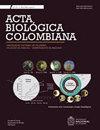微生物塑料在市场上的丰度和特性
IF 0.5
4区 生物学
Q4 PLANT SCIENCES
引用次数: 8
摘要
微塑料污染海鲜是人类摄入的主要途径之一。贝类是最重要的,因为大多数贝类都是新鲜完整的。本研究的目的是报告秘鲁三个省渔业中出售的商业双壳动物Aulacomya atra中微塑料的丰度和特征。进行了市场调查,并采用了标准的微塑料提取、观察和分析方法。三个省份的平均微塑料丰度为0.56±0.08MP g-1。秘鲁人口最多的省份利马的浓度最高(1.04±0.17 MP g-1)。大多数微塑料是纤维/线(58.8%)和蓝色(40.5%)。大多数纤维/线的聚合物特性是聚酯,这表明在洗衣过程中从衣服上脱落的微纤维可能是污染的主要来源之一。其他已鉴定的聚合物有聚乙烯(PE)、聚丙烯(PP)和聚苯乙烯(PS)。据估计,仅通过食用A.atra,秘鲁人口每年的膳食微塑料摄入量约为4818万人-1年,尽管数值可能因地区而异。讨论了对更好的供应链的需求、处理条件和进一步的研究。本文章由计算机程序翻译,如有差异,请以英文原文为准。
ABUNDANCE AND CHARACTERISTICS OF MICROPLASTICS IN MARKET BIVALVE Aulacomya Atra (MYTILIDAE: BIVALVIA)
Seafood contamination with microplastics is one major route for human intake. Shellfish are among the most important since most shellfish species are eaten fresh and entirely. The aim of the present study was to report the abundance and characteristics of microplastics in commercial bivalve Aulacomya atra sold in fisheries from three Peruvian provinces. Market surveys were carried out and standard microplastic extraction, observation, and analysis methods were conducted. The mean microplastic abundance in the three provinces was 0.56 ± 0.08 MP g-1. Lima, the most populated province in Peru, presented the highest concentration (1.04 ± 0.17 MP g-1). The majority of the microplastics were fiber/lines (58.8 %) and blue (40.5 %). The polymer identity of most fiber/lines was polyester, suggesting microfibers that shed from clothes during laundry may be one major source of contamination. Other identified polymers were polyethylene (PE), polypropylene (PP), and polystyrene (PS). The annual dietary microplastic intake by the Peruvian population was estimated to be ~48.18 MP person-1 year-1 via A. atra consumption only, although values could vary depending on the region. The need for a better supply chain, handling conditions, and further research are discussed.
求助全文
通过发布文献求助,成功后即可免费获取论文全文。
去求助
来源期刊

Acta Biologica Colombiana
Agricultural and Biological Sciences-General Agricultural and Biological Sciences
CiteScore
1.60
自引率
0.00%
发文量
21
审稿时长
13 weeks
期刊介绍:
The journal is published quarterly and divulges original and unpublished results of basic and applied research about biological subjects with special interest in Neotropical region. Manuscripts may be research articles, reviews, reflection articles or short notes. The Acta biol. Colomb Journal have a scientific and editorial board composed of expert researchers of in their areas of knowledge.
 求助内容:
求助内容: 应助结果提醒方式:
应助结果提醒方式:


